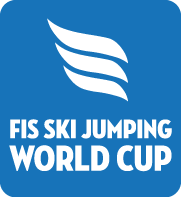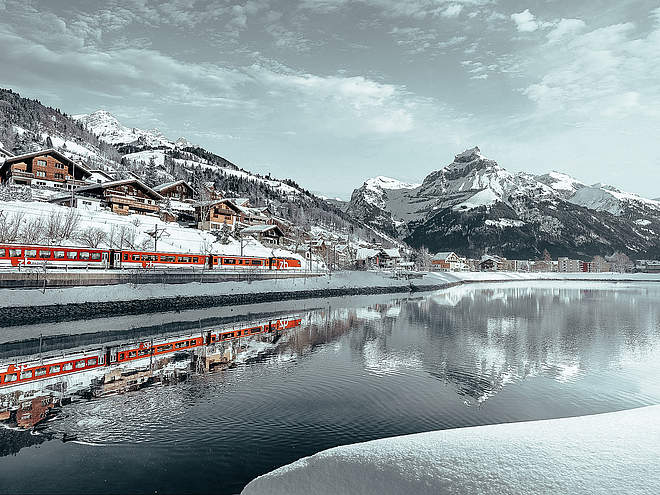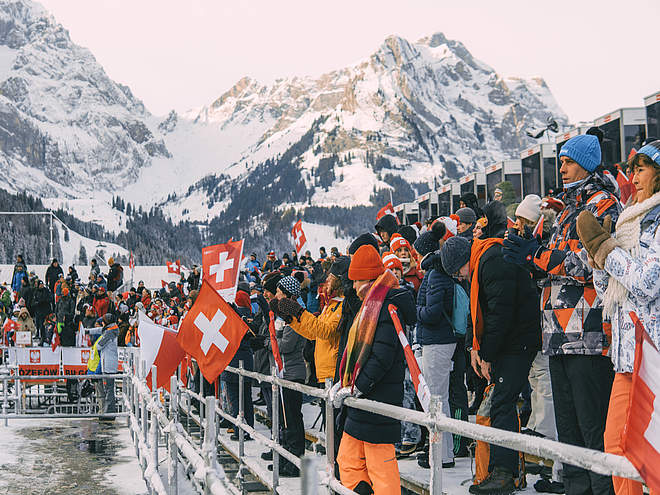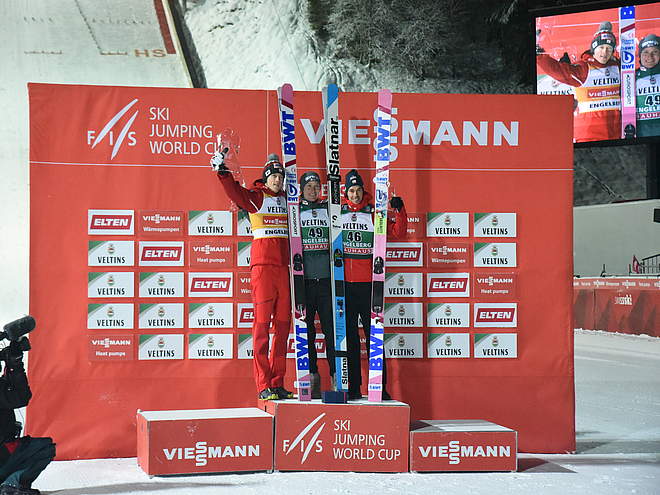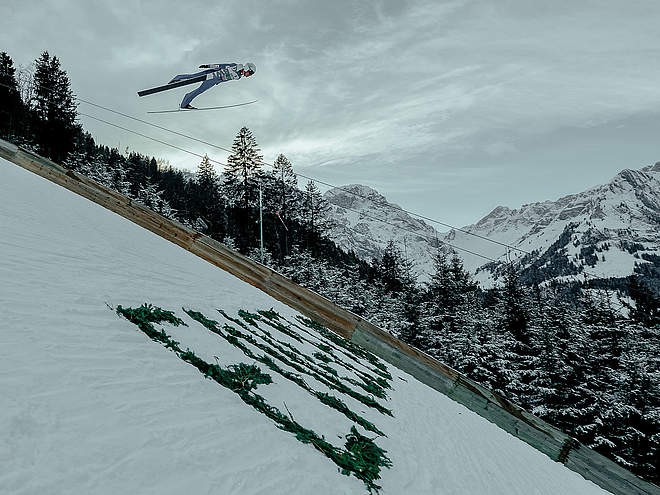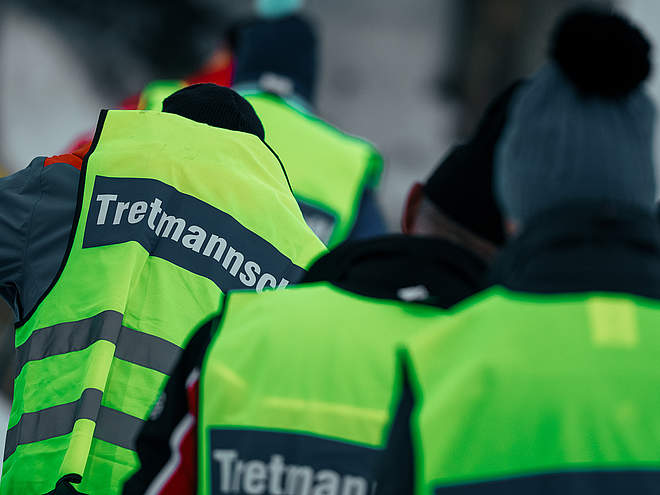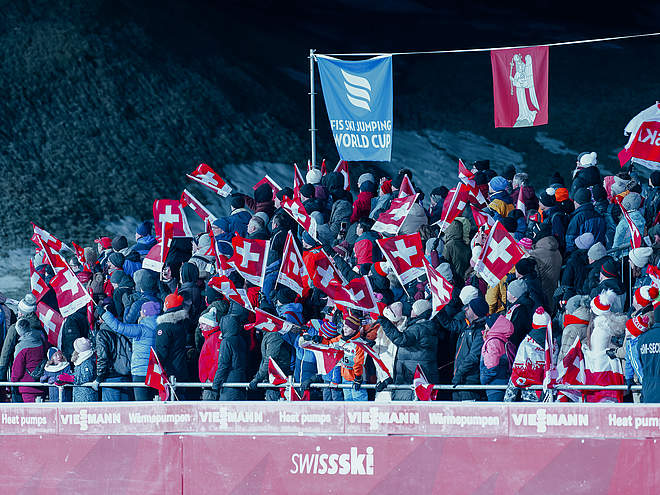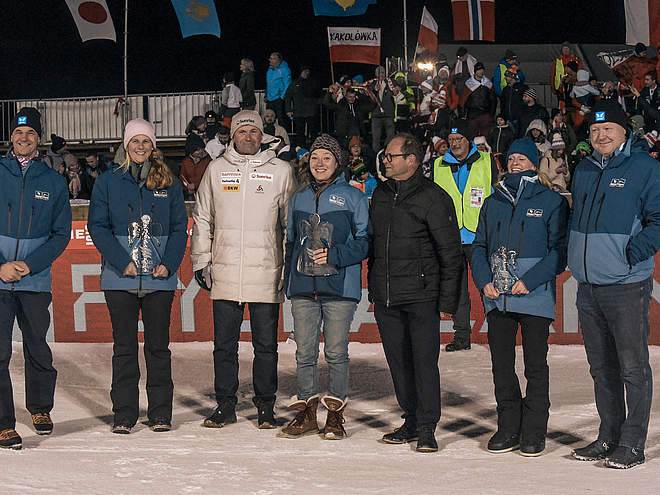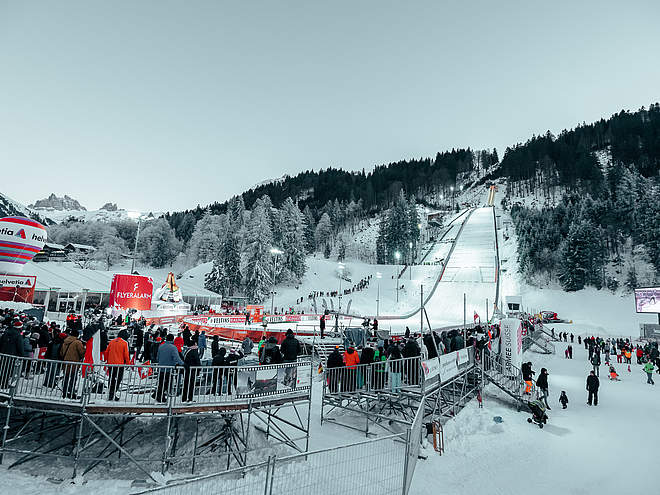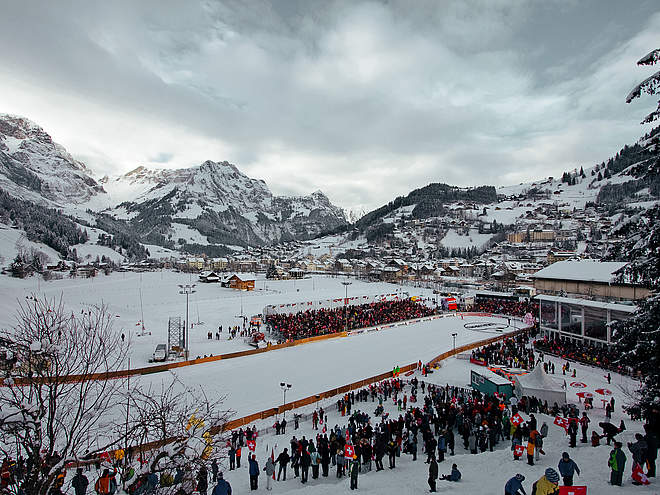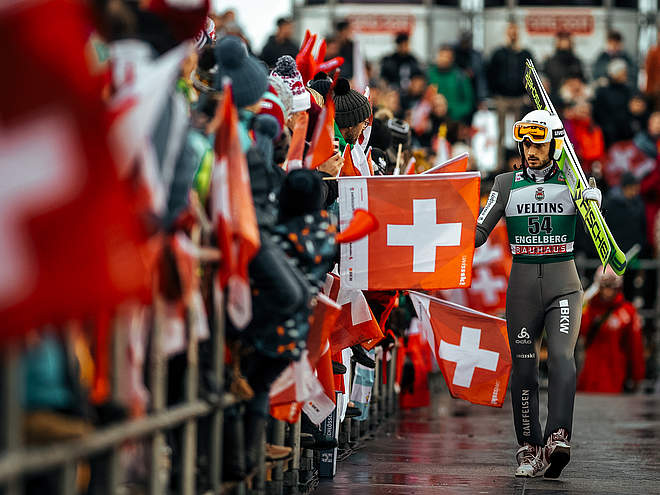Ski jumping A-Z
What you have to know about ski jumping
A for artificial slope
The International Ski Federation (FIS) has been organising the summer Ski Jumping Grand Prix on an artificial slope since 1994. The in-run tracks are made from porcelain covered in water and the landing area consists of plastic mats. Summer ski jumping was originally developed in the GDR in 1954 to enable ski jumpers to train in summer as well. In Switzerland, there are summer ski jumps in Einsiedeln and Kandersteg, as well as a few children’s ski jumps that also fitted with plastic mats.
B for body mass index (BMI)
The BMI formula – body mass in kg divided by the square of body height in m – is used to determine the maximum ski length for each individual athlete. According to the regulations, athletes must have a minimum BMI of 21 kg/m2 (including the weight of the ski suit and shoes) to be allowed to jump using skis that have a maximum length of 145 percent of their body height. If a male athlete’s BMI is lower than 21 kg/m2, he has to jump using proportionately shorter skis or else face disqualification. For example, if an athlete is 1.80 m tall and weighs 65 kg, his BMI is 20.06 (65 / 1.80²).
C for Continental Cup
The Continental Cup is an international series of ski jumping competitions. Ranked below the World Cup, it is often referred to as the “second league” of ski jumping. Ski jumpers who have already scored points in the World Cup, Grand Prix or Continental Cup are entitled to compete, as are those who scored at least one point in the previous or current season’s FIS Cup competitions. The number of participants is calculated periodically in accordance with the Continental Ranking List (CRL).
D for disqualification
The jury penalises competitors who violate International Ski Competition Rules (ICR) or fail to follow the rules of the competition or the jury’s instructions. Reasons for disqualification include:
- Violating rules on equipment
- Arriving late at the start
- Starting before the hill-clear signal
- Exceeding the start control time
- Violating competitor obligations
If a competitor is disqualified, s/he receives zero points for the relevant jump in that round.
E for eyes on the time
The start of a jump is divided into three different phases represented by a traffic light system. Athletes get to prepare for their jump during the red phase, before heading to the start gate when the light turns to amber. After a minimum of 20 seconds, the light switches to green. The athletes then have ten seconds to leave the start gate.
F for flight curve
Ski jumpers’ flight curves vary depending on technique, strength and body weight. The speed they gather on the in-run and current wind conditions have the biggest influence on the flight curve. The flight curve is therefore not the only factor that determines how far they jump.
G for gate factor
The jury can change the run-up length during a round and thus react to changing conditions. Coaches can also change the run-up length for their jumpers—unlike the jury, however, they can only shorten the length, which is primarily for safety reasons. If the jury shortens or lengthens the run-up, points are added or deducted from the athletes' scores to ensure fair conditions.
I for in-run
The speed that ski jumpers reach on the in-run is the main factor determining how far they jump. Each extra km/h in speed can equal an extra metre or more in distance. Standard ski jumps like the one in Engelberg usually generate in-run speeds of around 90 km/h. In ski flying, athletes can reach speeds of over 100 km/h.
J for Jury
The jury is made up of a Technical Delegate (TD), the FIS assistant to the TD, and the Chief of the competition. They set the “jury distance”, which varies depending on the size and profile of the ski jump. If a ski jumper reaches 95 percent of the jury distance, the jury decides whether to shorten the in-run and start the round again. The jury also decides if and when a competition should be postponed or interrupted due to unfavourable weather conditions.
K for K-Point
The jury uses the ski jump’s calculation point (K-point) as the basis for awarding distance points. If, for example, the calculation point is at 120 metres (“K 120”) and an athlete reaches this distance, s/he receives 60 points – plus or minus 1.8 points for every metre over or below that limit.
L for Landing
Good style points are awarded when the flight phase flows smoothly into the landing. This is easier said than done at landing speeds of over 100 km/h. Ski jumpers are subjected to forces equal to three or four times their body weight. The landing is only valid if the ski jumpers have only touched the ground with their skis until they have crossed the established "fall line".
M for measuring distances
The distance jumped is measured with digital cameras and analysed on computers. This system, which replaced distance judges only a few years ago, gives incredibly accurate distance measurements. A leader in this field, Swiss Timing also provides distance measurements and analyses in Engelberg.
N for night ski-jumping
The number of night ski-jumping events illuminated with floodlights has grown in recent years. One advantage of this kind of competition is that wind conditions are often better in the late afternoon or early evening. A night ski-jumping event was held in Engelberg in 2004 as part of the Continental Cup. As of 2016, night ski-jumping events can also be held on the Titlis ski jump thanks to a new floodlight system.
O for olympic discipline
Ski jumping has been part of the Winter Olympics since 1924. Women were added to the Olympic program in 2014 in Sochi.
P for Points
Athletes are awarded points in every round of a competition. The best and worst score out of the five style scores (see “style scores” section) are ignored. The average of the three middle scores is added to the distance score (see “K-point” section).
Q for Qualification
Since 2017 all competitors have to take part in the qualification round for the first competition run. Only 50 athletes get to take part in the competition, with just one exception to this rule: the competition is also open to athletes who jumped at least 90 percent of the biggest distance achieved in the qualification round but then fell. This means that there can sometimes be 51 or more athletes on the starting line.
S for style scores
Five judges from different countries award a maximum of 20 points per jump. They judge the flight phase and, above all, the landing. If the athlete fails to land in the Telemark style (see “Telemark” section), the jury will deduct up to four points. Flailing arms in the flight phase will lead to a deduction of 0.5 to five points, while a fall could cost up to ten points.
T for take-off table
It’s all or nothing once you reach the take-off table – only the athletes who have a perfect take-off can achieve great distances. Achieving the perfect take-off is all about technique, strength and optimal timing. The take-off table typically has angle of inclination of 10.5 to 11 degrees.
V for V-style
Jan Boklöv was the first ski jumper who, in 1989, spread his skis outwards to form a V shape in the air. The Swedish athlete won the 1988-89 World Cup season thanks to this new, initially controversial technique. Swiss athlete Stefan Zünd then perfected the V-style, earning him a place among the ski jumping elite. Boklöv’s victory left a lasting legacy, as the V-style very quickly replaced the classic parallel-style.
W for wind
Many people don’t know that ski jumpers hate tailwinds as they tend to push them downwards. Tailwinds are not uncommon in Engelberg – which is why trainers always keep a close eye on wind gauges. But top jumpers know how to deal with tailwinds and still manage to jump considerable distances.
